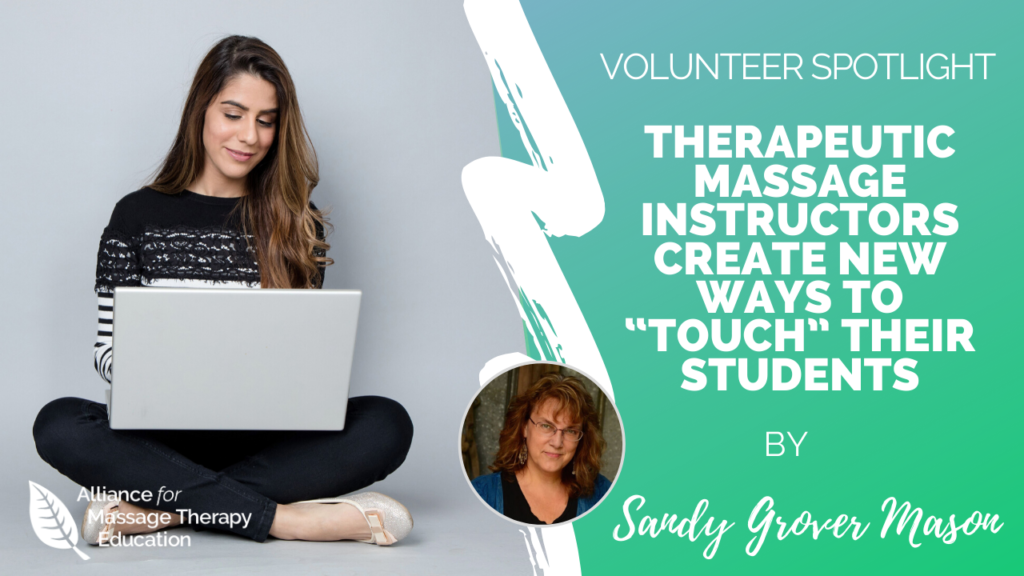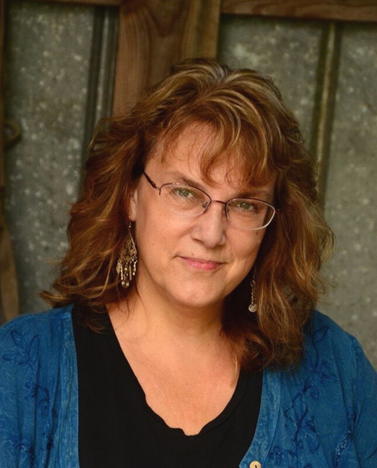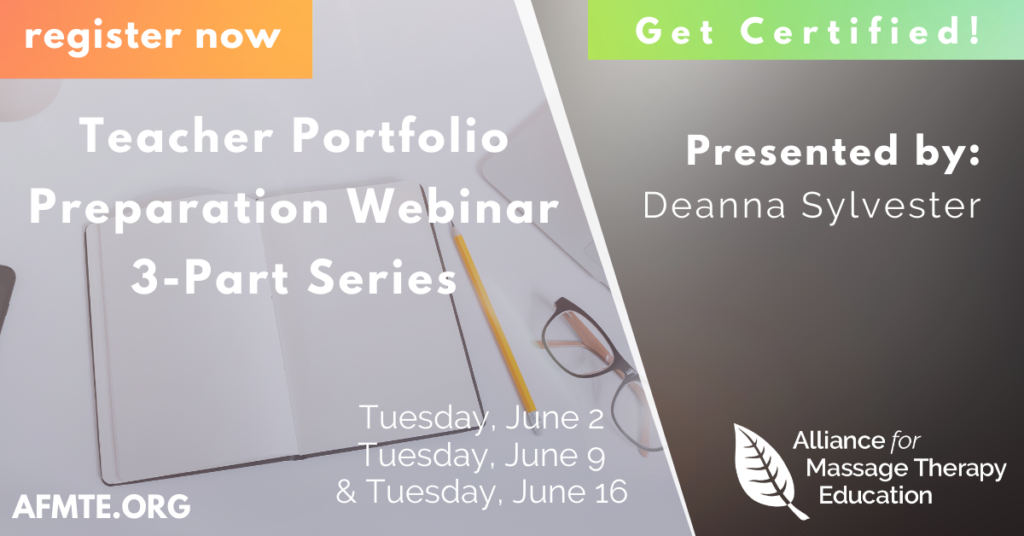
Therapeutic Massage Instructors Create New Ways To “Touch” Their Students
In mid-March, 2020, Forsyth Tech sent their students off to Spring Break little knowing that instruction as normal would not return to the college for the rest of the semester – indeed, perhaps for the foreseeable future. What was quickly clear was that the COVID-19 infection spreading across the nation was going to interfere with classes and an impending Shelter In Place mandate from the governor would soon require that classroom learning processes either cease or continue in a completely new, remote-learning format.
Our Therapeutic Massage instructors were not prepared to teach an essentially hands-on course while hunkered down at home behind their computer screens, but after an extended spring break, and many unpaid hours of dedication, that is exactly what they figured out how to do.
Adapting to Online Education
It all started with a dedicated Program Coordinator, Kim Moore, who is well-versed in BlackBoard, holds Online Teacher Certification, and who is savvy with technology in general. Due to strict requirements by the NCBMBT (the North Carolina licensing board for massage therapists) even in community college programs Massage Therapists may not be taught with any online content. However, Kim’s work in the Associate in Applied Science (AAS) degree program for therapeutic massage, a hybrid course designed for students who are already licensed (LMBT), equipped her to be quite familiar with how to transfer course materials onto BlackBoard for online access.
During the extended spring break, all 7 adjunct instructors joined in BlackBoard Collaborate sessions with the PC (Kim) and me, the Clinical Education Coordinator, and began to expand on our own education. This enthusiastic team transformed knowledge, which they had previously only ever conveyed face-to-face (and hands–to-body), into a working proficiency with online instruction – all in just a week! Paper handouts, Youtube videos, written exams and collaborative exercises were all transferred to the computer in a form palatable to a massage student, and readily accessible online.
We were so very fortunate that this tragic pandemic arrived at the time that it did, instead of earlier in the academic year. Our students set for graduation in May had already been taught the majority of their bodywork the previous semester and in January-March, so what remained was mostly the refinement of existing skillsets and the introduction of some final new concepts. The part-time (night class) students were still in beginning stages of bodywork, but they were to return in the Fall, so if they missed some hands-on instruction it could be made up/reinforced the following semester when they returned to class.
The greatest challenges arose with hands-on material that was brand new to students, and with the practice students were supposed to get within the context of student clinic. This is where I feel our adjuncts truly outdid themselves, and collaborated to find all possible solutions by thinking “outside the box.”
Confronting Challenges with Hands-On Components
The greatest challenges arose with hands-on material that was brand new to students, and with the practice students were supposed to get within the context of student clinic. This is where I feel our adjuncts truly outdid themselves and collaborated to find all possible solutions by thinking “outside the box.”
In the case with new bodywork, our instructor for Sports Massage and Seated Massage, Luz Moogan, worked with her students via BB Collaborate. In advance, I polled all students as to the following:
- Do you have computer access at home?
- Does the computer have video capabilities? If not, do you have a video camera, phone, or other recording device you can use?
- Do you have room at home to set up a massage table?
- Do you have access to a massage chair (this is not a requirement for our program)?
- Do you have a person at home on whom you can practice and perform practical exams?
The answers to these questions determined how the hands-on content could be completed.
Collaborate sessions were conducted in real-time (synchronous) during the dates and times class would normally have been held on campus. While child-care or elder-care issues were at times a hindrance, all students were each somehow able to procure a space at home in which to learn, and willing household participants during the time when they required hands-on practice. By setting up their tables (or in one case a chair) in front of computer cameras, the students were able to demonstrate each move the instructor showed them ( which she, too, did in her own house, on her own table, on her own family).
As a moderator of these BB Collaborate sessions, I was impressed with how thorough the instruction was, including verbal descriptions during the demonstrations (as would have happened in a normal classroom), and careful observation by the instructor as the students demonstrated the moves on their demo client. Key to this was to elicit feedback from the family member on the table, as well. Normally massage students are educated in providing their classmates with feedback from the table about pressure, depth, pace, and general comfort level; these skills had to be coaxed from SIP co-habitants who were not well versed in massage student etiquette.
Overall, we feel the students got the relevant information and were able to appropriately apply these manual skills and be visually assessed by the instructor, both formatively during class, and with a summative practical exam. The element which made this format far from ideal, of course, was that the instructor could not feel the students’ touch, and the students did not get to feel the instructors touch – or anyone else’s for that matter. In massage school, the student receiving the work is considered equally as important as them being able to demonstrate it, but given the circumstances, and the fact that these students had already all been in school for 1 ½ semesters (even more for the AAS students), it was sufficient to finish the semester for this portion of their education.
The final element in completion of the training of the graduating entry level (Certificate) students was to complete student clinic. Because working on the public, as clinic is designed, could not happen, we had to brainstorm for other solutions. The collaboration between myself and the clinic instructor, Larry Ball, resulted in the creation of a series of Theoretical Clients for students to “work on.” Students had already completed 8 weeks of clinic working on clients who were previously unknown to them, in a setting where timing and efficiency of movement as well as professionalism and soft skills are essential. While those elements could not be reproduced, we figured we could focus on two remaining essential skills: treatment planning and documentation.
It turned out this approach was also effective in two other modules: Therapeutic Massage with Kim Myers, and Kinesiology II with Candy Fleming (MTH 120). The approach by each instructor was unique and brought forth different elements of treatment planning in each case. Kim Myers’ students worked collaboratively, as a group, to analyze a theoretical client with specific complaints and discuss what exact muscles, muscle groups, and fascia were to be addressed and then what techniques and stretches might be applied to effectively do so. In Candy’s class, each student was given a theoretical client with issues, and individually coached as they came up with not only what areas to address, but what plans would be made for future sessions, and what progress may/may not have been made each week with this same client. In each case, elements from the instructor’s actual client experiences were compiled into an Intake Form, in order to make the theoretical situations as realistic as possible, as well as providing historical background to the efficacy of the solutions offered.
In student clinic (MTH 121), we decided to mimic the clinic setting more than a private setting, and gave each student a different client each session. Normally we do this so the students can experience as many and diverse a body type and level of complaint as possible in the time given; this time we did it so they could have the experience of reading the SOAP charting from a previous student, and building on what that student practitioner theoretically did with the client as a treatment plan. They would then record on their documentation what their own session entailed, and include a plan for the next student to follow. In this case the students would submit their SOAP charting and the original Intake Form onto BlackBoard for the instructor to comment upon, and pick up the “client file” from the previous student and begin anew.
Because the students could also benefit from practicing their Intake Interview skills, and because much essential information comes directly from the client rather than simply from an Intake Form, each instructor took time in BB Collaborate to act as the theoretical client and allow the students to ask them relevant questions about their ailments and about the proposed session. As moderator for some of these interviews I would have to submit that this was probably the most entertaining, and eventually informative part of the whole online teaching process. By the end of these modules and Student Clinic, I felt confident in each student’s ability to thoroughly interview, document and plan treatment for a wide variety of clients.
I only wish I could have been a body on each of their tables!
I feel we made lemonade out of the COVID-19 lemons, and were relatively successful in completing the education of the Class of 2020 in Therapeutic Massage
Conclusion
In conclusion, I feel we made lemonade out of the COVID-19 lemons, and were relatively successful in completing the education of the Class of 2020 in Therapeutic Massage. It was far from ideal, and would probably not have been possible had the SIP mandate happened earlier in the semester. As it was I was impressed with the resilience of the students, the enthusiasm and bravery of our instructors, and the overall success of our collaborative efforts. It remains to be seen what will be available, viable and safe in our future, and we all know we cannot teach Massage Therapy without hands-on instruction and competencies. But I, for one, am grateful for the opportunities which arose from this difficult challenge, and am as proud as I can be of the innovation, dedication and patience exhibited by the members of our Program this semester.
Sandy Grover Mason, BA, LMBT #4403, LMT
BCTMB, CEMB #05

Sandy Mason is a founding member of AFMTE and is currently Clinical Education Coordinator and full-time Instructor at Forsyth Technical Community College in North Carolina in both the entry-level and Associate Degree Therapeutic Massage Programs. She is a NCBTMB Approved Provider and has presented classes at local and national AMTA conventions. Her passion for elevating educational standards for our profession is evident in her active roles in the Alliance’s NTESP project through the National Teacher Training Curriculum Development Committee (NTTCDC) and the Certification Process Committee (CPC). She has been a textbook reviewer, contributing author and subject matter expert for exam development in the profession, and runs a private practice in Winston-Salem.
Register for our free webinar to get prepared to apply for AFMTE Educator Certification! Teacher Portfolio Together

